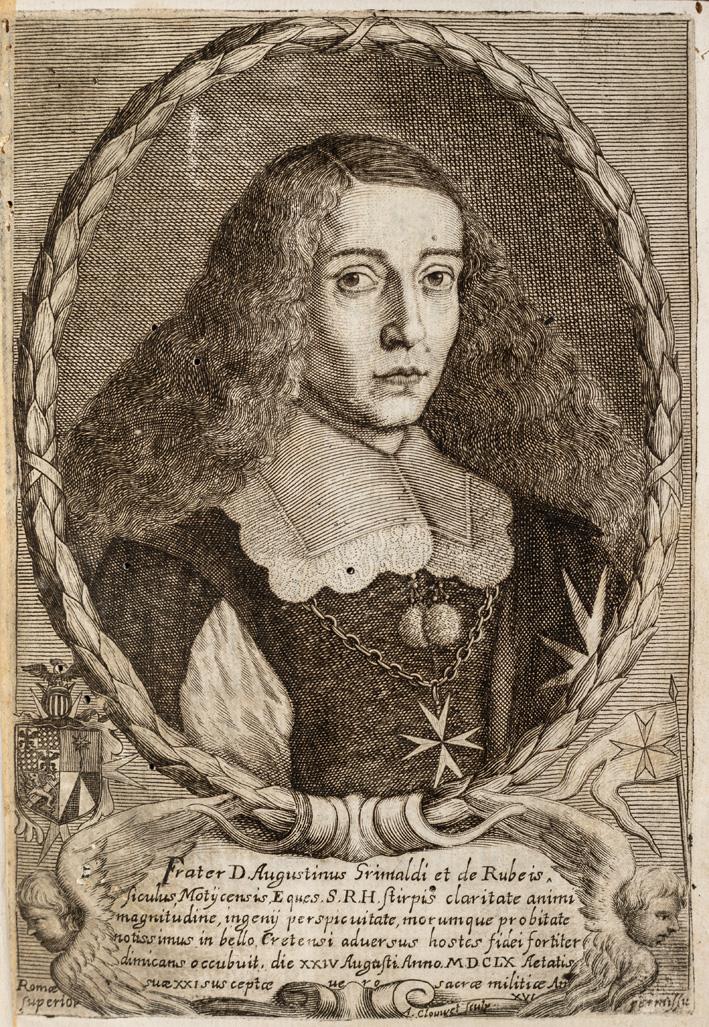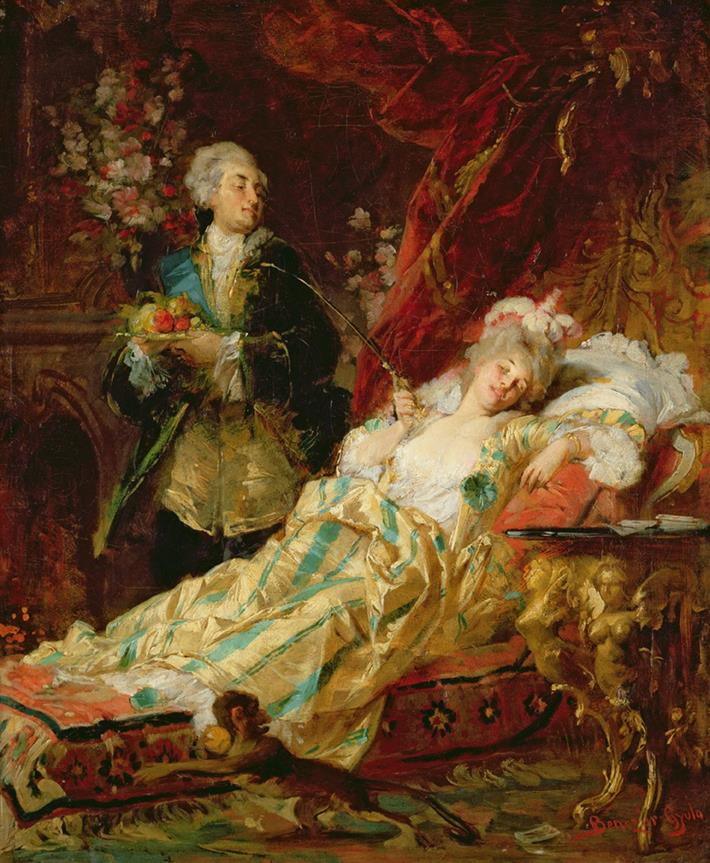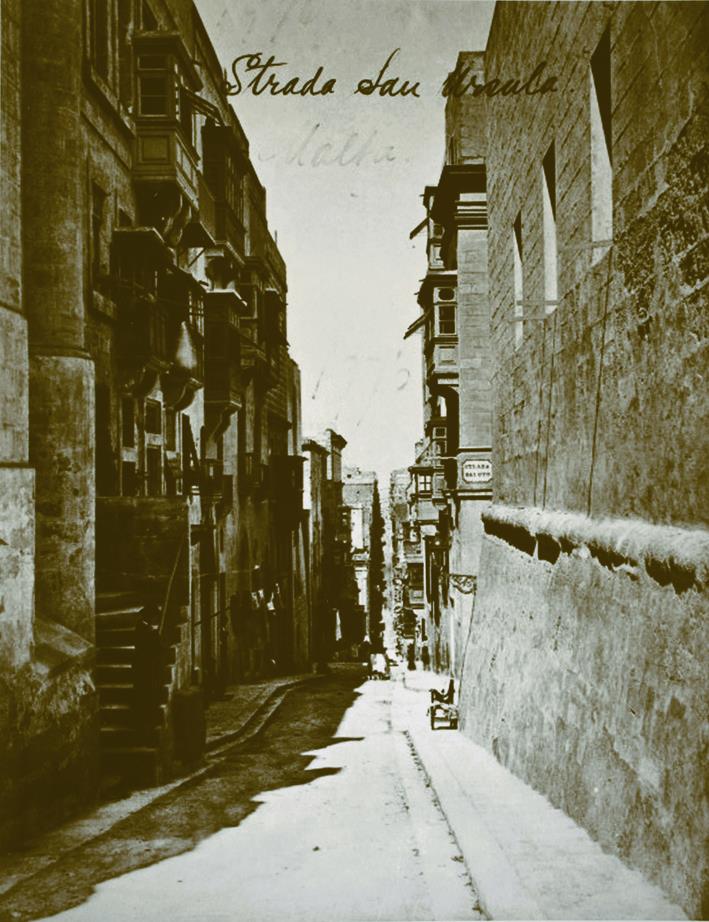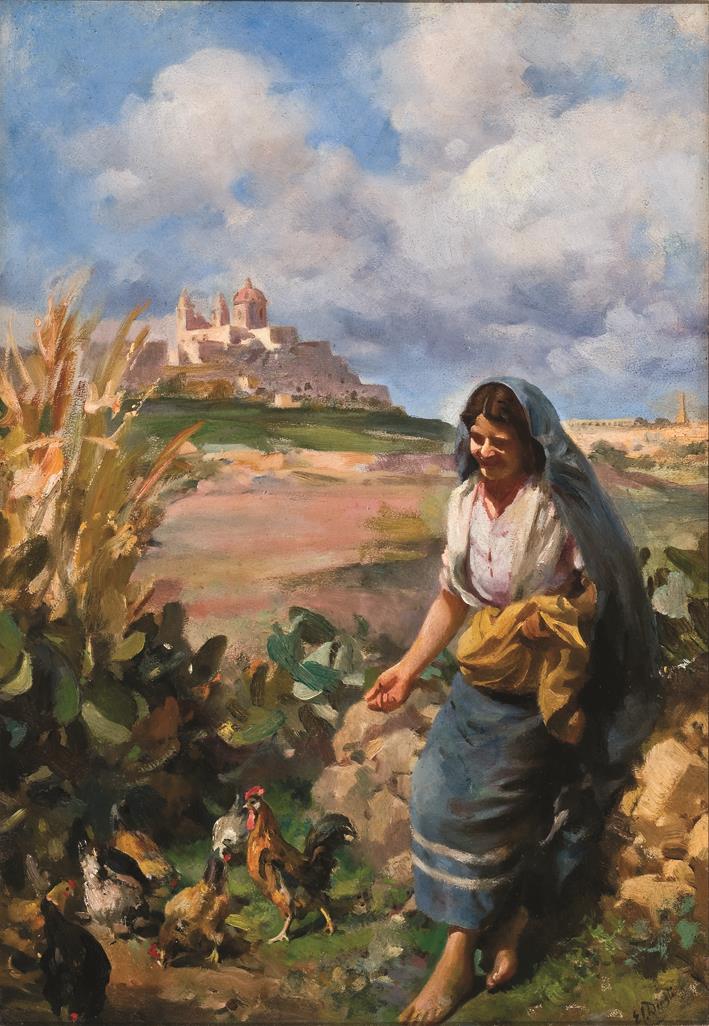Blaming it on Eve: An Anthology of Stories on Women in Malta by Giovanni Bonello is the second volume in the series, More Histories. This follows the first volume Falling in Eden: An Anthology of Stories on Crime in Malta which I had so enjoyed.
Eve is another beautifully designed and produced book: quality of paper is first class and there are plenty of illustrations and extensive references, so useful for further reading. These qualities in a book enrich the reading experience. I have one quibble. It is impossible to lay these books flat. If I need to copy from it, as I sometimes need to do, it is very frustrating. Please someone find a way around this small problem.

Portrait engraving of Agostino Grimaldi from Giovanni Paolo dell’Epifania’s L’Idea del Cavaliere Gerosolimitano (Messina: Giacomo Mattei, 1662.) (Courtesy of the National Library of Malta/Photo: Lisa Attard

Gyula Benczur (1844-1920), King Louis XV in the boudoir of Madame Dubarry, oil on canvas, 79 x 65cm, 1874
The book features 14 essays, the titles of which immediately grab your attention. There are intriguing tales: Quadruple Murder in Malta in 1672; Temptations of a Young Knight: Agostino Grimaldi (1639-1660); When the Inquisitor and the Grand Master Clashed over a Young Lady; Gio Domenico Ottonelli on Lechery in Malta; When All Paris Laughed at the Balì De Mesmes; Abortion in Malta at the Time of the Knights; The Love Children of Grand Master de Valette; Christian Warriors, Mortal Sinners; Memories of Caterina Scappi. These essays are far more interesting than Hello! Magazine. Many of the essays explore events from the time of the Knights of St John. I am not listing the rest of the chapters as they don't sound half as lurid as these, although upon reading some of these essays they turn out not to be lurid at all. Do I sound disappointed? Perhaps now you can understand why I simply had to purchase a copy of this book. I wanted to read these stories. The last chapter, Enigmas of the Maltese Ghonnella is followed by information about the author; then a page about the provenance of these stories - some having been published elsewhere. Then finally a useful index.

Leonardo da Vinci, sketches and notes about the fetus in the womb, red chalk and traces of black chalk, pen and ink, wash, 30.4 x 22cm (sheet of paper), c. 1151. On the verso pen and ink, with some offset red chalk./Courtesy of the Royal Collection Trust/Source: Wikimedia Commons)

Old photograph of St Ursula Street, Valletta, 1860s, (Courtesy of the Giovanni Bonello Collection)

After Francesco Furini (1603-1646). The Birth of Benjamin and the Death of Rachel, oil on canvas, 99.5 x 125.5cm. Alte Pinakotek, Munich (Courtesy of the Wellcome Collection)
Bonello's writing is known for its wit and meticulous research, offering a fresh perspective on historical narratives that have often been male-dominated. If you're interested in Malta's micro-history or the role of women in shaping it, this book is a fascinating read.
One aspect worth highlighting about Blaming it on Eve is Bonello's approach to tackling historical taboos and unearthing lesser-known stories. His sharp, sometimes provocative style adds a layer of engagement to what could otherwise be just historical recounting. He also challenges traditional narratives by giving visibility to the influence and agency of women in Malta's history - a perspective often overshadowed in historical writings. He is no misogynist. I suspect he is followed by a good number of female admirers.
The essays aren't just for history buffs; they touch on universal themes like power, morality, love, and justice, making them relatable even to a broader audience. The book serves as a reminder of how history is shaped not just by major events, but also by the lives of individuals, including those who were often overlooked.

LEFT: Private portrait of a woman wearing an ghonnella. Photograph taken at the Grand Studio (Courtesy of the Giovanni Bonello Collection). RIGHT: Photograph showing women wearing the ghonnella as they march down Kingsway, Valletta, in 1962. (Courtesy of the Giovanni Bonello Collection)
At the beginning of the book, Guilia Privitelli, editor of the series, writes about this new series and about this volume in particular. You may remember that Fondazzjoni Patrimonju Malti published the last volume of the popular Histories of Malta in 2013, a series which ran into twelve parts, all the work of Giovanni Bonello, whose name now is almost a legend. As Giulia writes: "With this new series, it is as though Bonello feels that time has not yet come; there is still more to discover about the monster lurking within before we even dare face it. Some steps ought to be retraced, stories revisited and others viewed from different angles... stories previously published and scattered among several issues of local newspapers and periodicals have been collected, many widely reworked, and presented here thematically." Imagine the organisation needed to do this kind of work. My hat off to this formidable author, even if I've taken it off several times before.

Edward Caruana Dingli, Feeding the Chickens, oil on canvas, 45 x 28cm. A similar image was printed on the front cover of Illustrated Guide of Malta and Gozo, 1930s, Private Collection, Malta. (Photo: Peter Bartolo Parnis)
Yes, Giulia, I am right behind you when you write that "history-writing has not been kind to women" and that "a woman's say in history amounts to much, much more than that. And so strong is her say that despite the crippled and voiceless state to which she is often reduced, volumes have been written, are being written, and could still be written about her resilience, her pursuit of change, her determining presence that made and makes history, that is history."
In reading this book I get the impression that the author, a former judge of the European Court of Human Rights, is on the side of women and is trying to be fair to them. His writing often brings a smile to the reader's face. Those of us familiar with his extensive work know that humour is part of his makeup.
One aspect worth highlighting about Blaming it on Eve is Bonello's approach to tackling historical taboos and unearthing lesser-known stories. His sharp, sometimes provocative style adds a layer of engagement to what could otherwise be just historical recounting. He also challenges traditional narratives by giving visibility to the influence and agency of women in Malta's history - a perspective often overshadowed in historical writings.
The essays aren't just for history buffs; they touch on universal themes like power, morality, love, and justice, making them relatable even to a broader audience. The book serves as a reminder of how history is shaped not just by major events, but also by the lives of individuals, including those who were often overlooked.
If you'd like to dive deeper into similar works, Giovanni Bonello has an extensive bibliography of essays and books, many of which focus on Malta's nuanced history.
This series is published by Kite Group Ltd in partnership with FPM generously supported by the Francis Miller Memorial Fund. Creative Director: Michael Lowell; Design & Layout Lisa Attard; Editor: Giulia Privitelli; Illustrations: Rebecca Bonaci; Produced by Fondazzjoni Patrimonju Malti. Extent: 272 pages. Price: €55.